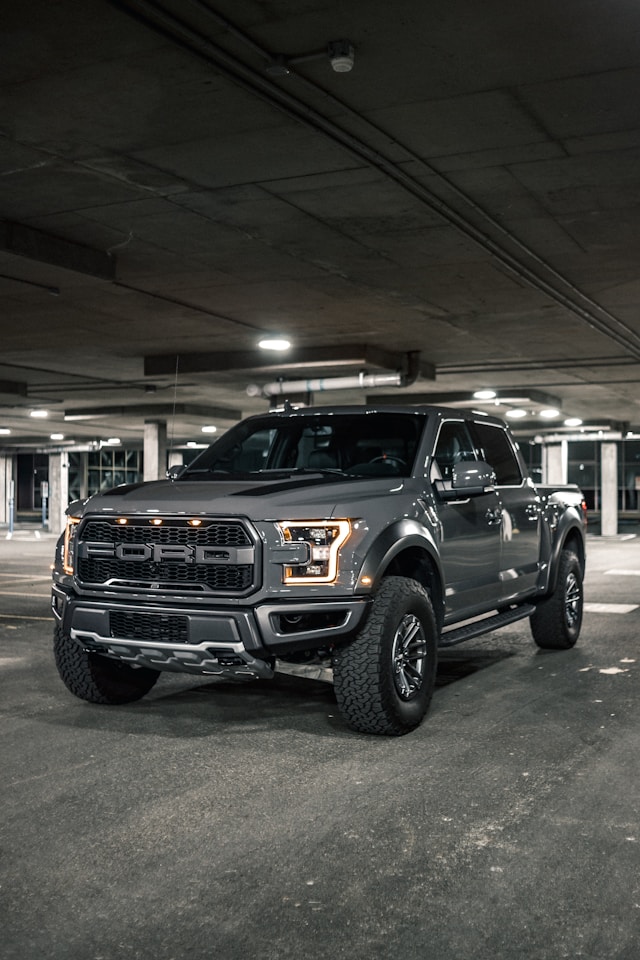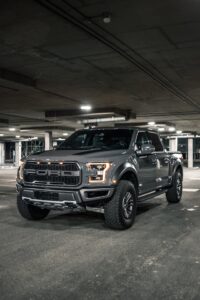
The Evolution of SUV Cars: A Brief History
Contents
- 1 Predecessors of Modern SUVs
- 2 Early Utility Vehicles
- 3 The Emergence of the Sports Utility Vehicle
- 4 SUVs in the 1980s: A Shift in Design and Popularity
- 5 SUVs in the 1990s: Rising Demand and Diverse Models
- 6 SUVs in the 2000s: Advancements in Technology and Features
- 7 The Impact of Environmental Concerns on SUVs
- 8 SUVs in the 2010s: Evolution of Fuel Efficiency and Electric Options
- 9 Current Trends and Future Prospects for SUVs
- 10 Cultural and Societal Influences on the Evolution of SUVs
Predecessors of Modern SUVs
One of the earliest predecessors of modern SUVs can be traced back to the vehicles used in World War II. During this time, military vehicles known as “Jeeps” were utilized by soldiers for their off-road capabilities and ruggedness. These Jeeps were compact, yet versatile and could navigate through various terrains with ease.
Another significant predecessor to modern SUVs was the station wagon, which gained popularity in the 1950s and 1960s. Station wagons were large, family-oriented vehicles that provided ample seating and storage space. They were often equipped with rear-wheel drive and had a raised ground clearance compared to traditional sedans. The station wagon’s design and functionality laid the foundation for the emergence of larger, more versatile and capable utility vehicles in the future.
Early Utility Vehicles
Early utility vehicles, sometimes referred to as early SUVs, played a significant role in the development of modern sports utility vehicles. These early predecessors were designed with functionality and durability in mind, catering to those who needed a vehicle that could accommodate both passengers and cargo. While not as refined as their modern counterparts, these early utility vehicles laid the foundation for the versatility and capabilities we associate with SUVs today.
In terms of design, early utility vehicles typically featured a body-on-frame construction, similar to trucks of the time. This sturdy construction allowed these vehicles to handle various terrains and withstand rugged use. Additionally, they often had a high ground clearance and robust suspension systems to further enhance their off-road performance. These early utility vehicles were also spacious, offering a practical combination of seating capacity and ample cargo room, making them suitable for both everyday use and adventure. Whether being used for family outings or tackling off-road trails, early utility vehicles provided a versatile and reliable solution for those seeking a vehicle that could handle multi-purpose tasks.
The Emergence of the Sports Utility Vehicle
Once upon a time, in the early years of the automobile industry, utility vehicles were primarily designed for practicality rather than luxury or high performance. These early precursors of modern SUVs were rugged and sturdy, built to withstand rough terrains and carry heavy loads. They were primarily used for off-road purposes, such as farming, construction, and military operations. With their large chassis and powerful engines, these early utility vehicles laid the foundation for the emergence of the Sports Utility Vehicle (SUV) as we know it today.
Fast forward to the late 20th century, and the concept of the SUV started to gain traction among automobile manufacturers and consumers alike. The 1980s witnessed a significant shift in the design and popularity of utility vehicles. Car companies began to incorporate more comfortable features and improved handling capabilities into these vehicles, combining the prowess of off-road performance with the comfort of a passenger car. As a result, the SUV began to appeal to a wider range of customers beyond those primarily seeking a rugged workhorse.
SUVs in the 1980s: A Shift in Design and Popularity
The 1980s marked a significant turning point for SUVs, as both their design and popularity underwent a notable shift. These vehicles, previously recognized for their utilitarian nature and rugged off-road capabilities, began to embrace a more refined and sophisticated aesthetic. Automakers recognized the growing demand for SUVs as a lifestyle choice rather than simply a practical necessity, and started incorporating luxurious features and stylish design elements.
One of the most prominent examples of this shift was the introduction of the Ford Bronco II in 1983. With its sleek and aerodynamic design, the Bronco II appealed to a wider range of consumers who sought both functionality and attractiveness in their vehicles. This departure from the boxy and utilitarian designs of earlier SUVs reflected a growing trend towards a more modern and streamlined aesthetic. Moreover, the increasing popularity of SUVs in urban areas contributed to the shift in design, as consumers demanded vehicles that not only performed well off-road but also looked stylish on city streets.
SUVs in the 1990s: Rising Demand and Diverse Models
The 1990s marked a turning point for the sports utility vehicle (SUV) industry, with a significant rise in demand and an influx of diverse models. As consumer preferences shifted towards larger vehicles, SUVs became increasingly popular for their combination of spaciousness, versatility, and ruggedness. This surge in demand was fueled by a growing desire for vehicles that could handle various terrains and weather conditions, while also providing ample seating and cargo space.
During this time, automakers responded to the rising demand by introducing a wide range of SUV models. Traditional full-size SUVs, such as the Ford Explorer and Chevrolet Tahoe, continued to dominate the market with their robust towing capacities and off-road capabilities. However, the 1990s also saw the emergence of compact and mid-size SUVs, like the Honda CR-V and Toyota RAV4, which attracted consumers seeking a more fuel-efficient and maneuverable option. The expansion of the SUV market gave consumers an unprecedented level of choice, with vehicles available in different sizes, shapes, and features to accommodate various lifestyles and preferences.
SUVs in the 2000s: Advancements in Technology and Features
The 2000s marked a significant era for SUVs, as advancements in technology and features reshaped the landscape of this popular vehicle segment. One key development was the introduction of more advanced safety features, such as electronic stability control and side-curtain airbags. These enhancements greatly improved the overall safety profile of SUVs, providing increased protection for both drivers and passengers.
Furthermore, the 2000s saw a rise in the integration of technological innovations within SUVs. In-car entertainment systems became more sophisticated, incorporating features like DVD players, satellite radio, and navigation systems. Additionally, advancements in engine technology led to increased fuel efficiency, addressing one of the main concerns associated with SUVs. With these improvements in technology and features, SUVs in the 2000s set the stage for further evolution in the years to come.
The Impact of Environmental Concerns on SUVs
In recent years, environmental concerns have become a prominent factor in shaping the fate of SUVs. As the conversation around climate change and carbon emissions escalates, SUVs have faced criticism for their contribution to greenhouse gas emissions and poor fuel efficiency. Critics argue that the large size and heavy weight of SUVs result in higher fuel consumption and increased CO2 emissions, exacerbating the environmental impact of these vehicles. This criticism has been further amplified by the growing popularity of SUVs, with their sales outpacing that of traditional sedans in many markets.
To mitigate the impact on the environment, automakers have started to incorporate various measures to enhance the fuel efficiency of SUVs. Developments in technology such as hybrid powertrains, lightweight materials, and aerodynamic designs have played a crucial role in improving their efficiency. Additionally, the adoption of stricter government regulations and emissions standards has compelled manufacturers to invest in alternative powertrain technologies, such as electric and plug-in hybrid SUVs. These eco-friendly options not only reduce emissions but also offer consumers the opportunity to embrace cleaner mobility without compromising on the versatility and functionality offered by SUVs. As the demand for greener vehicles continues to rise, it is anticipated that the impact of environmental concerns on SUVs will persist, influencing the direction of future designs and technologies.
SUVs in the 2010s: Evolution of Fuel Efficiency and Electric Options
In the 2010s, the automotive industry witnessed a significant evolution in fuel efficiency and electric options for SUVs. With growing concerns about environmental sustainability and fluctuating fuel prices, automakers began investing in innovative technologies to enhance fuel economy and reduce emissions in SUVs. This focus on fuel efficiency led to the development of hybrid and plug-in hybrid SUVs, which combine traditional combustion engines with electric motors to optimize fuel consumption.
One noteworthy advancement in the evolution of SUVs in the 2010s was the introduction of fully electric SUVs. These vehicles incorporate advanced battery technologies to provide an emission-free driving experience. The electric SUVs not only offer environmental benefits but also provide drivers with an efficient and enjoyable driving experience. With improved ranges and charging infrastructure, electric SUVs became a viable option for those seeking a greener and more sustainable mode of transportation.
As the decade progressed, automakers worked on improving the fuel efficiency of traditional SUVs through the introduction of lightweight materials and aerodynamic designs. Additionally, advancements in hybrid technology allowed SUVs to transition seamlessly between electric and gasoline power, optimizing fuel consumption based on driving conditions. These developments in fuel efficiency and electric options transformed SUVs into more environmentally friendly vehicles, offering consumers a wider range of choices that aligned with their values and preferences.
Current Trends and Future Prospects for SUVs
SUVs have been a dominant force in the automotive industry in recent years and continue to grow in popularity. One current trend in the SUV market is the rise of smaller and more compact models. As consumers increasingly value fuel efficiency and maneuverability, car manufacturers have responded by introducing SUVs that are more compact in size compared to their larger counterparts. These smaller SUVs offer the versatility of a traditional SUV while also providing better fuel economy and easier parking in crowded urban areas.
Another trend in the SUV market is the increasing demand for technological advancements and connectivity features. As technology evolves, consumers expect their vehicles to keep up with the latest advancements. This has led to the integration of features such as touchscreen infotainment systems, smartphone connectivity, and advanced safety features in SUVs. Additionally, there is a growing interest in electric and hybrid SUVs as consumers become more environmentally conscious. In response to this demand, car manufacturers are investing in the development of electric SUV models, aiming to provide efficient and sustainable options for SUV enthusiasts.
Cultural and Societal Influences on the Evolution of SUVs
Cultural and societal influences have played a significant role in shaping the evolution of SUVs over the years. One key factor is the American preference for larger vehicles, which stems from a cultural affinity for capability, power, and freedom. The concept of the open road and the spirit of adventure are deeply ingrained in the American psyche, and SUVs have become a symbol of these ideals. This cultural preference has been reflected in the design and marketing strategies of SUV manufacturers, with an emphasis on ruggedness, spaciousness, and off-road capabilities.
Additionally, societal trends such as the desire for safety and security have also influenced the evolution of SUVs. As families prioritized the protection of their loved ones, the demand for vehicles with higher ground clearance and a commanding driving position increased. SUVs provide a sense of safety on the road, offering a feeling of invulnerability due to their sturdy build and elevated stance. This societal shift towards prioritizing safety contributed to the rise in popularity of SUVs and convinced automakers to further develop and refine their offerings to meet the demands of the market.






